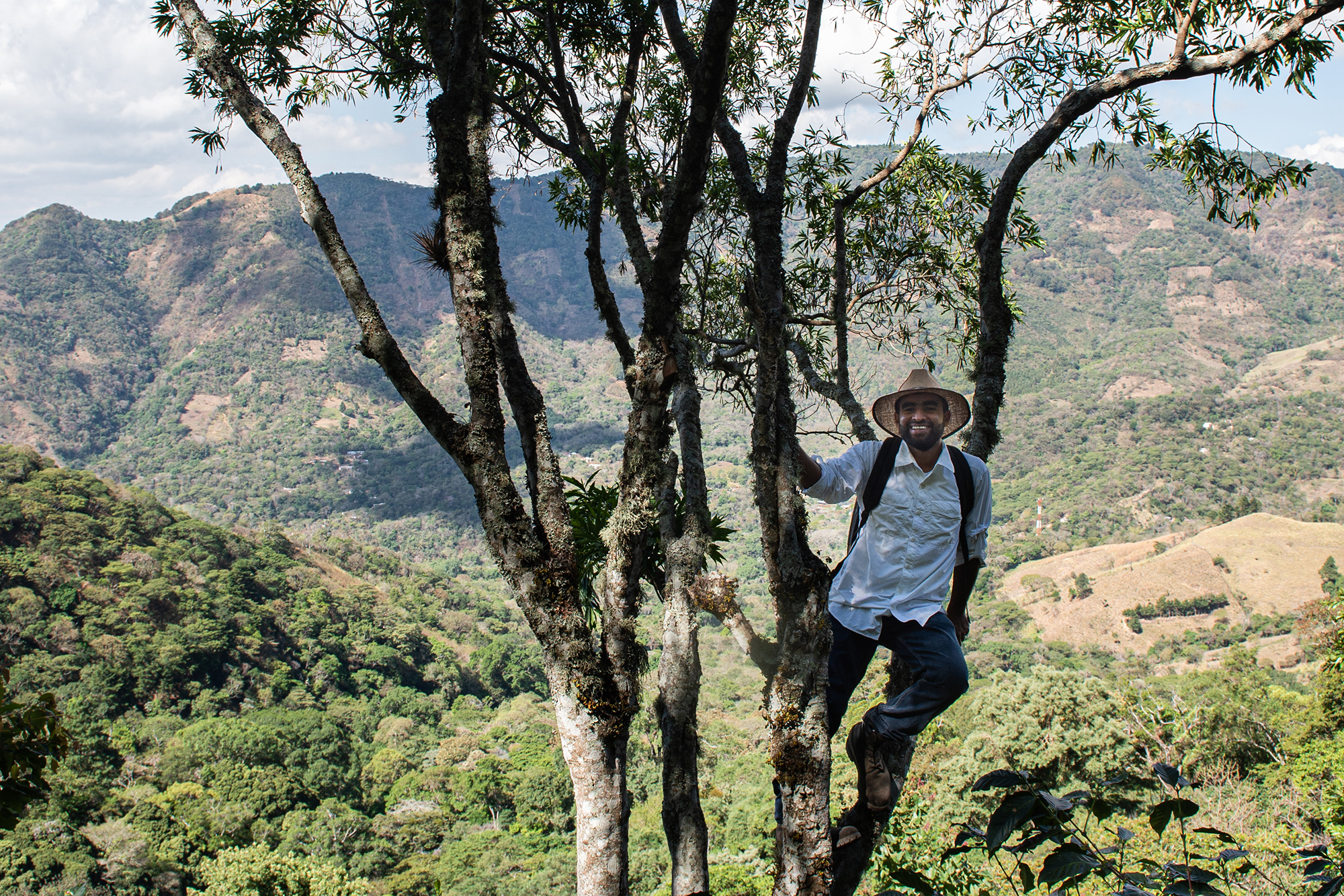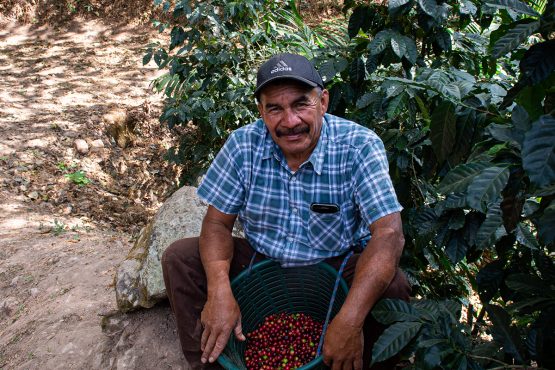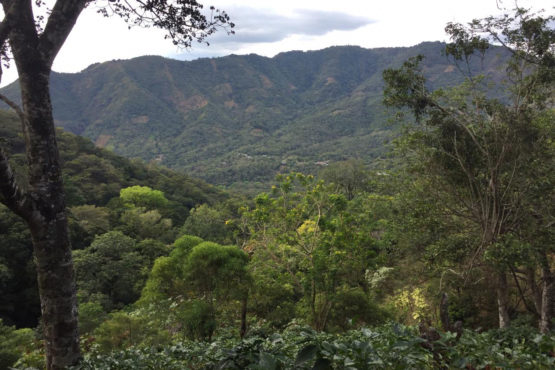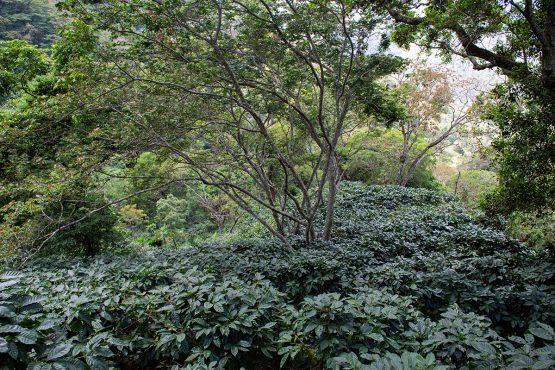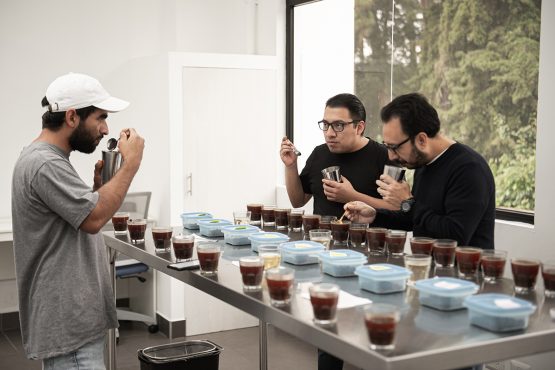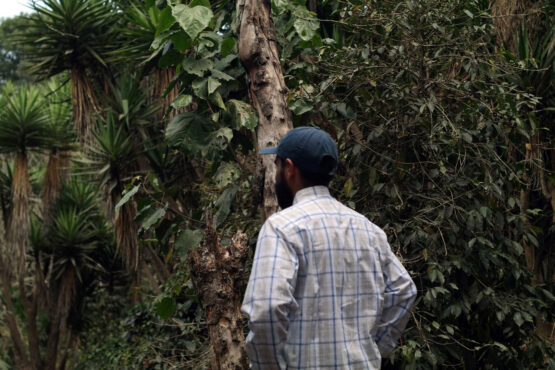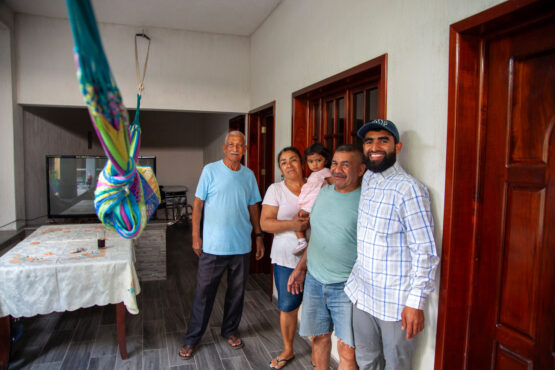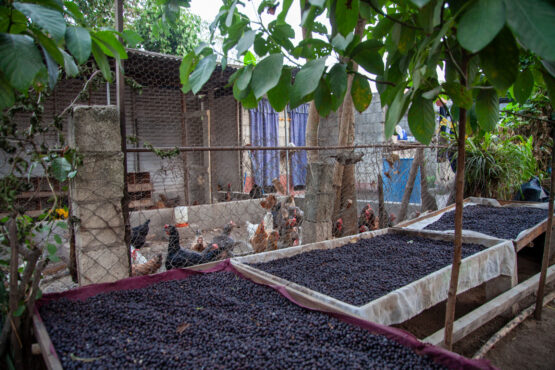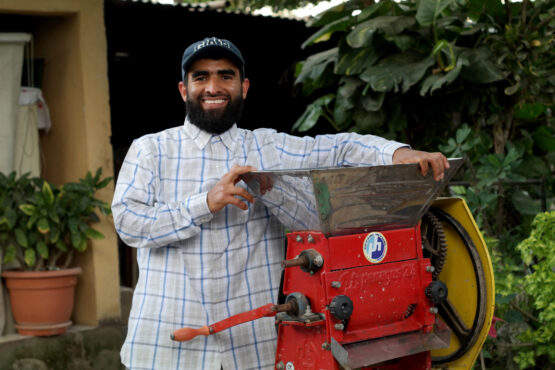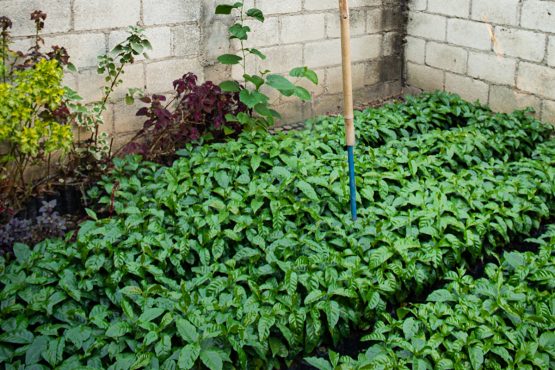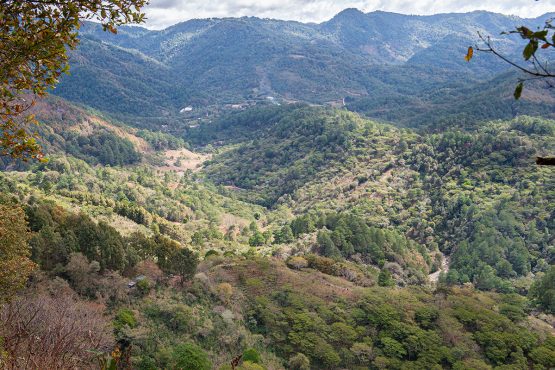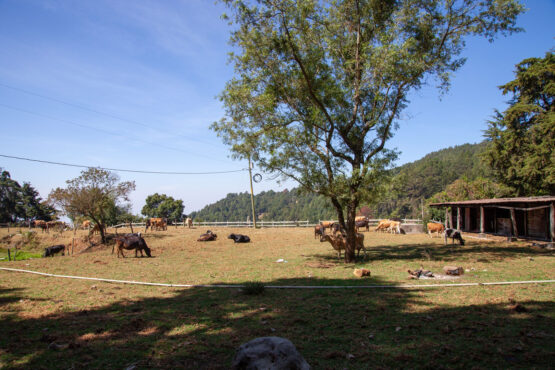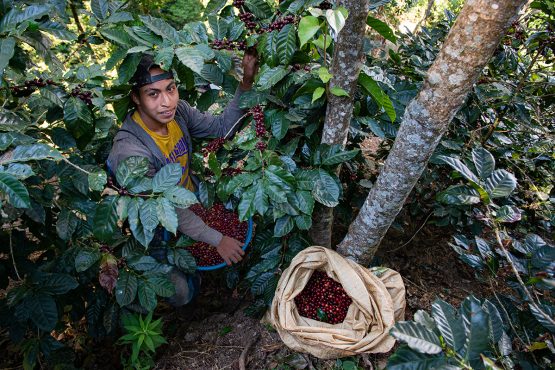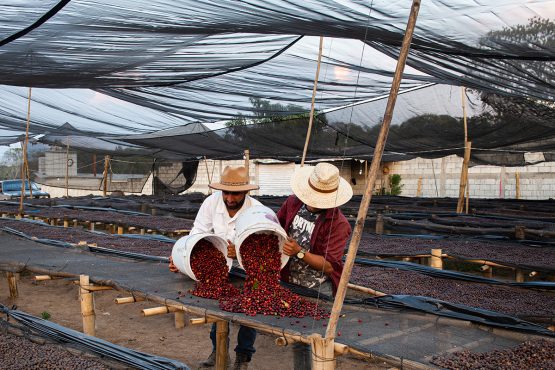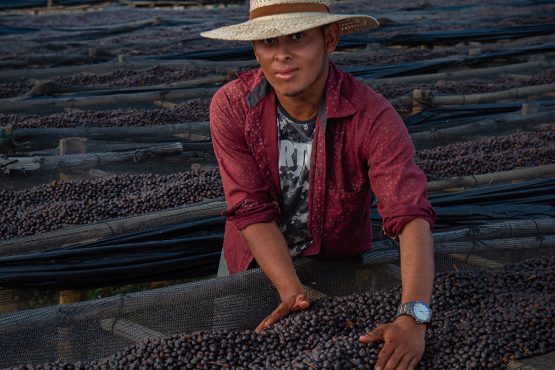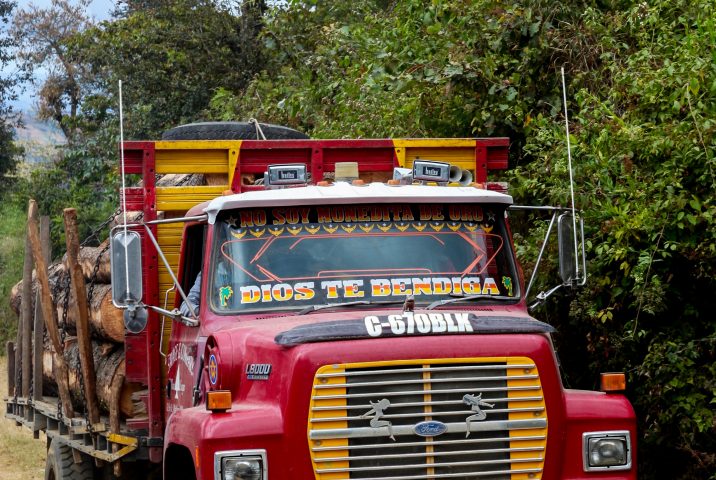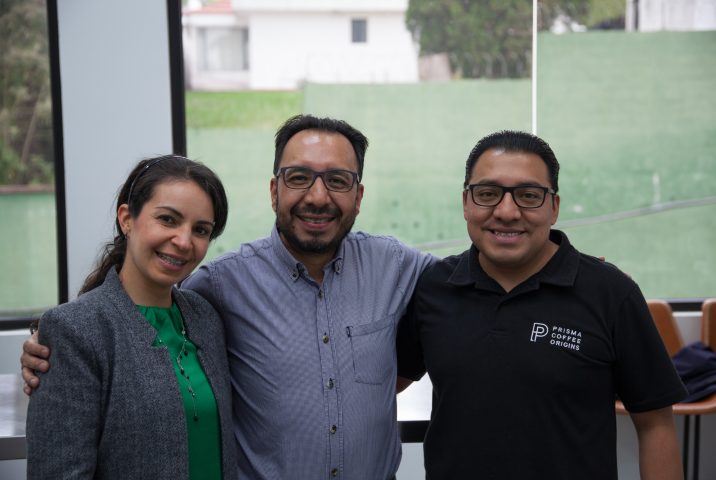El Calagual Natural
Transparent, with elegant florals, sugarcane sweetness and silky mouthfeel. Cherry, plum jam and chocoloate fudge.
This very special micro-lot comes from a tiny 4.5-hectare farm located near the village of Concepción Zacuapa in Guatemala’s Santa Rosa department. It was produced by Darwin Estuardo Fabián Estrada.
Darwin is a fifth-generation coffee producer. His family’s history in coffee dates back to 1899 when his family moved to Santa Rosa de Lima and established a large 154-hectare farm called Finca El Chicón. Bonifacio Fabián, Darwin’s father, inherited a small piece of this farm called El Calagual, named after the abundant native calaguala ferns in the area.
For many years Bonifacio sold his coffee as cherry to local markets at commercial prices. However, his son saw the potential in the farm after he began studying agronomy at university, specialising in coffee production. Darwin realised very quickly that his family’s farm had all the right conditions to produce exceptional coffee, with the right varieties planted, a high elevation and unique microclimate. After much badgering, he convinced his father to let him try to harvest and process some coffee as part of his thesis for university. The cup results were excellent, and helped Darwin demonstrate the potential of his farm to his father.
Darwin is now managing El Calagual and experimenting with processes and varieties in order to maximise the farm’s quality potential. Given the incredibly low historical prices paid for commercial coffee, Darwin recognises that having superior quality will allow him to access a wider market for the coffee and secure a more sustainable future for his family’s farm. When he is not at El Calagual, Darwin works at Anacafe (Guatemala’s coffee institute), as part of their expert QA team, and as a consultant for other small-scale farmers in the region. We first met Darwin in 2019, when he worked at Prisma, one of our export partners in Guatemala. Back then, he managed the lab and worked in the QC program, which trained him in tasting and evaluating his crop alongside other exceptional coffees in Guatemala.
Since taking over El Calagual’s operations, Darwin has performed many small and very focused experiments on the farm, which have led to increased yields and exceptional quality. In 2019 Darwin built raised drying beds to process naturals, and his next step will be to invest in a large pulper to enable him to process honey and fully washed coffees. He already owns a small pulper, which he uses to process tiny lots from the various rare variety plots he has planted at El Calagual. Currently, Darwin grows around 30 varieties in his nursery, which he also sells to generate extra income during the off-season.
Darwin’s long-term goal for El Calagual is to set it up to withstand the effects of climate change; something the region is already experiencing. As a child, Darwin remembers seeing his father selling truckloads of fresh cherry for processing — this stands in stark contrast to the reality of today, where yields are much lower. When his father first took over the farm the climate was much colder, to the point that shade trees were considered harmful because they affected the amount of cherry trees could grow. Today, shade trees are critical to operations, as they help protect trees from the intense sun of Santa Rosa, and the lack of water affecting the area. In the face of these challenges, Darwin remains positive “We can’t spend all of our time complaining. Things won’t always be bad, and even if they are, we’ll always find a way to solve them” he explained on a recent visit.
Part of Darwin’s solution is to focus on increasing the value of his crop, through the varieties he plants and the way he processes them. At the highest part of the farm, Darwin has a nearly mature Java plot, and an Ethiopian heirloom plot, which he believes will eventually fetch better prices, increasing his income without creating a bigger workload. He’s currently trying to convince relatives who own abandoned neighbouring parcels of land to lease or sell them to him, because he believes that with proper management, they could be brought back to a productive state. As he told us recently, “Don’t worry, I’m not going anywhere. You’ll always have my coffee available!”
We’ve been fortunate to have access to Darwin’s production from his very first year of operations in 2019, and once again, we fell in love with it on the table. When we first began buying coffee from El Calagual, his total production of specialty grade coffee was just fifteen bags— and we’re excited to see how far he can go!
This exceptional lot was sourced with the help of export partner Eduardo Ambrocio and the team at Prisma Coffee Origins. Eduardo, who is also a Head Judge for Cup of Excellence, is one of the best cuppers we know — and through his work in Guatemala, we are connected to several quality-focused producers, who grow coffee at a small to medium scale. Head here to learn more about Eduardo’s work in Guatemala.
ABOUT SANTA ROSA
Though the Santa Rosa department is technically not one of ANACAFE’s official coffee-growing origins, it has become one of the country’s most recognised regions. Farms in Santa Rosa are spread out across the expanse of the department – meaning climatic conditions vary drastically from one estate to another, resulting in a multitude of unique cup profiles.
The region is known for producing much of the country’s commercial-grade coffee, but the range of micro-climates and rich, volcanic soils found in Santa Rosa offer great potential for specialty-grade production. This is evident from the 2022 Cup of Excellence results, when 5 coffees from Santa Rosa were awarded for the first time in the competition’s history.
The departments’ north is a valley surrounded by mountains, creating a corridor for dry winds from the Atlantic Ocean to travel south all the way to the Pacific. Because of this, conditions in the north tend to be drier and experience earlier harvests, while the south is more humid and experiences longer rainier seasons. In recent years, Santa Rosa has greatly experienced the effects of climate change, with many farmers choosing to parcel up their land to sell while the value of land is still high.
Santa Rosa is the traditional home of the Xinka people, some of Guatemala’s earliest inhabitants. Having arrived from the Andes mountains via the Pacific Ocean, the Xinka are one of the country’s only indigenous communities that does not share cultural or linguistic similarities with the Maya, Guatemala’s largest indigenous group. While less than two-percent of the modern-day population identify as Xinka, they have become one of the loudest voices in the fight for Guatemala’s environmental preservation. In recent years, the Xinka have stood up to multinational mining companies that buy up land and destroy established farms in search for silver. The community has banded together and fought to be recognised as the region’s traditional owners, who want their land to be used for more environmentally and socially sustainable projects.
HOW THIS COFFEE WAS PROCESSED
As owner Darwin explains, the processing of his coffee requires a few stages, to ensure the highest cup quality possible. The first stage is the picking, when the team at Calagual only pick coffee at 25-26° Brix. The Pache variety easily achieves this metric, as it has a naturally high concentration of sugars.
Once the coffee is picked, the second stage of the processing is 36 hours of aerobic fermentation in cherry form. This is done using permeable nylon sacks, which keeps coffee stable by matching its internal temperature with that of the surrounding environment. At this stage, the team is very careful to place the sacks filled with cherries in a cool, dry place to protect them from the elements, as high temperatures can accelerate fermentation and introduce undesirable flavours.
The third stage is the laying of the cherries on El Calagual’s drying beds. When laying cherries out, the team carefully sort through them to remove any unripe or damaged fruit – only then does the drying finally begin. Darwin has chosen beds over cement patios to dry his coffee, as patios retain too much heat during the day and can affect the final cup. Raised drying beds have the benefit of allowing air to flow freely over and under the cherries, keeping them cool as they dry.
Cherries are left to dry for approximately 8 days before Darwin and his team begins to turn them by hand. They prefer to keep clusters of cherries together at this stage, to homogenise the drying process. Cherries take around 24 days to reach the desired moisture level, as Darwin believes the flavours in the cup benefit from a longer and slower drying time.
As Darwin puts it, “We do all of this with a lot of love… It’s a work we enjoy doing and it makes us happy to be able to do it well!
